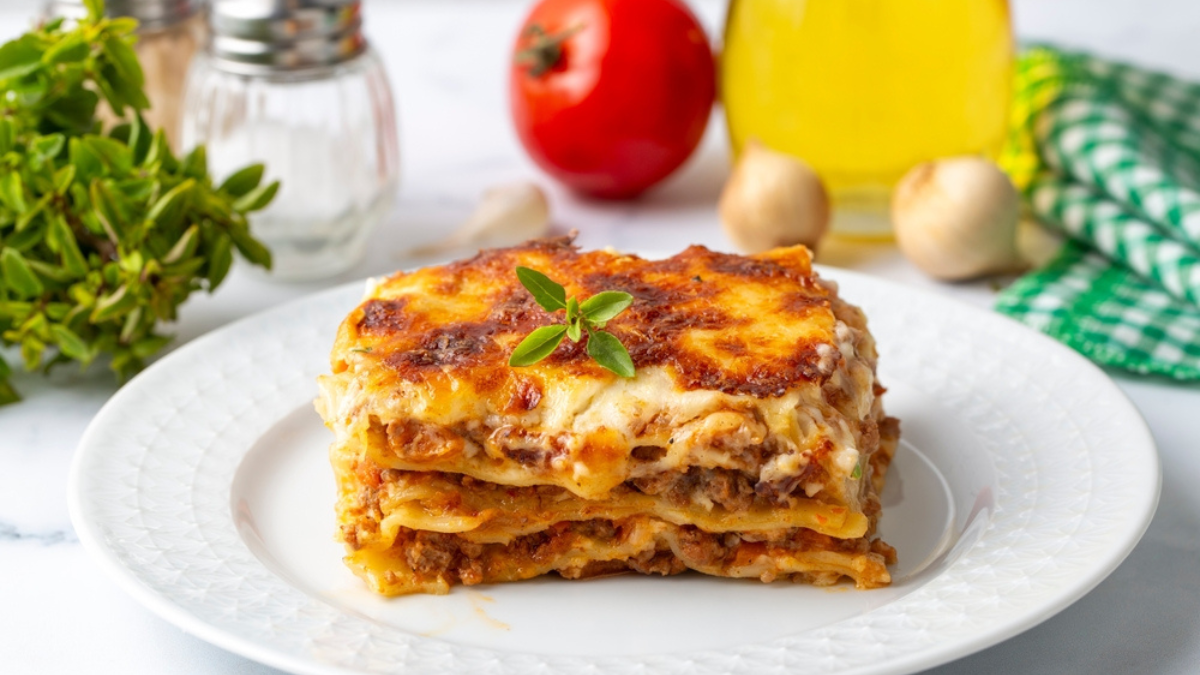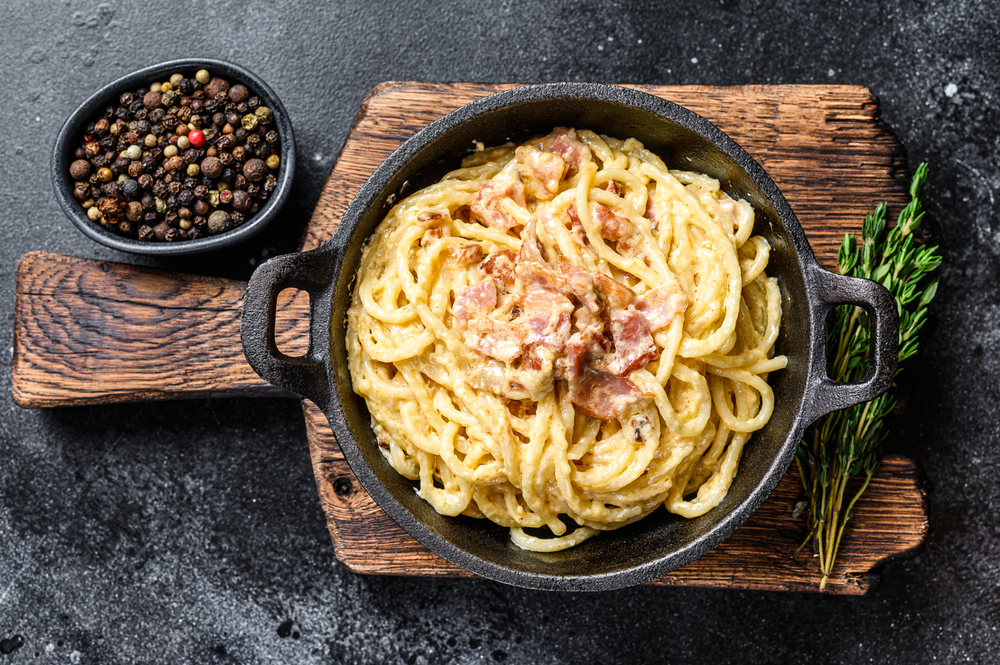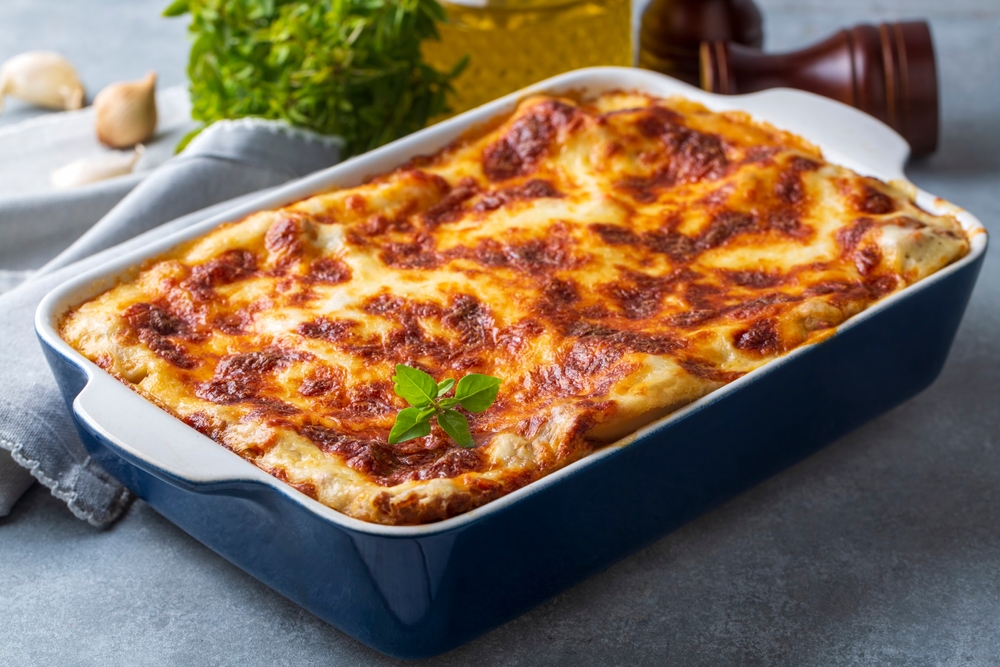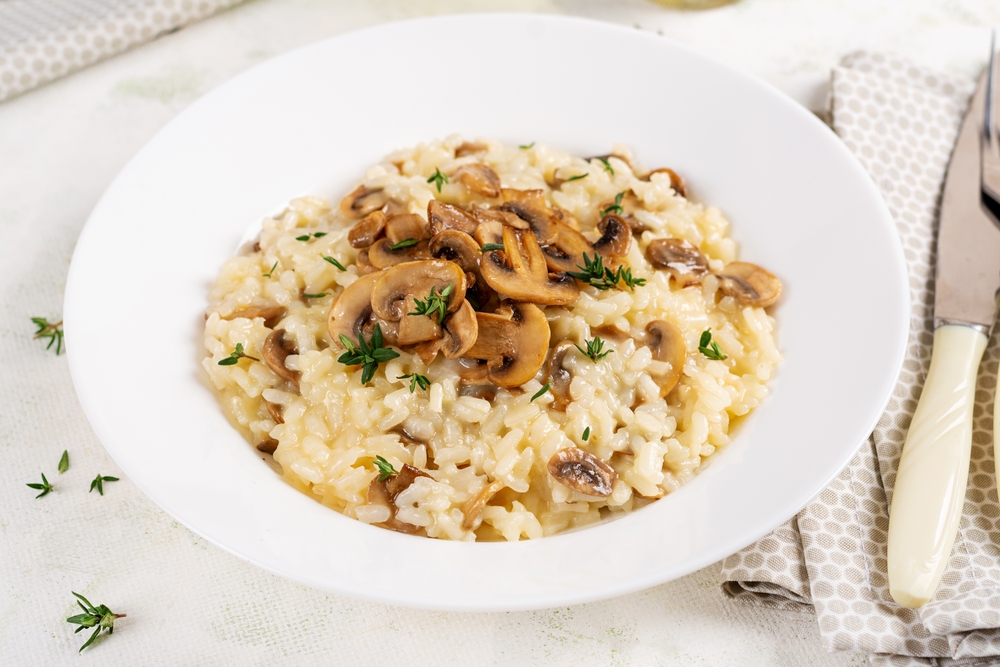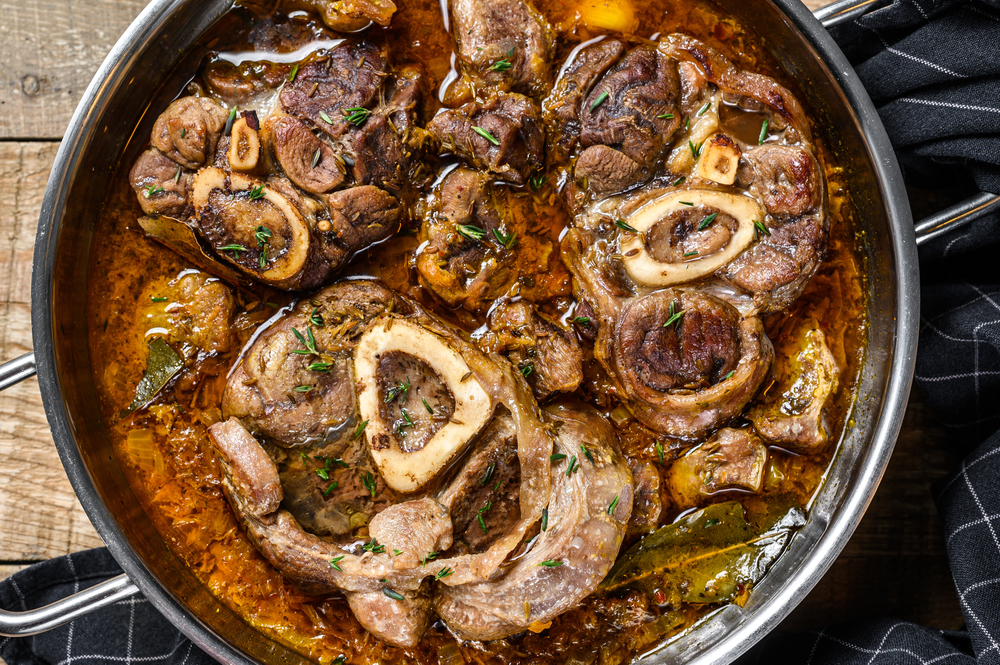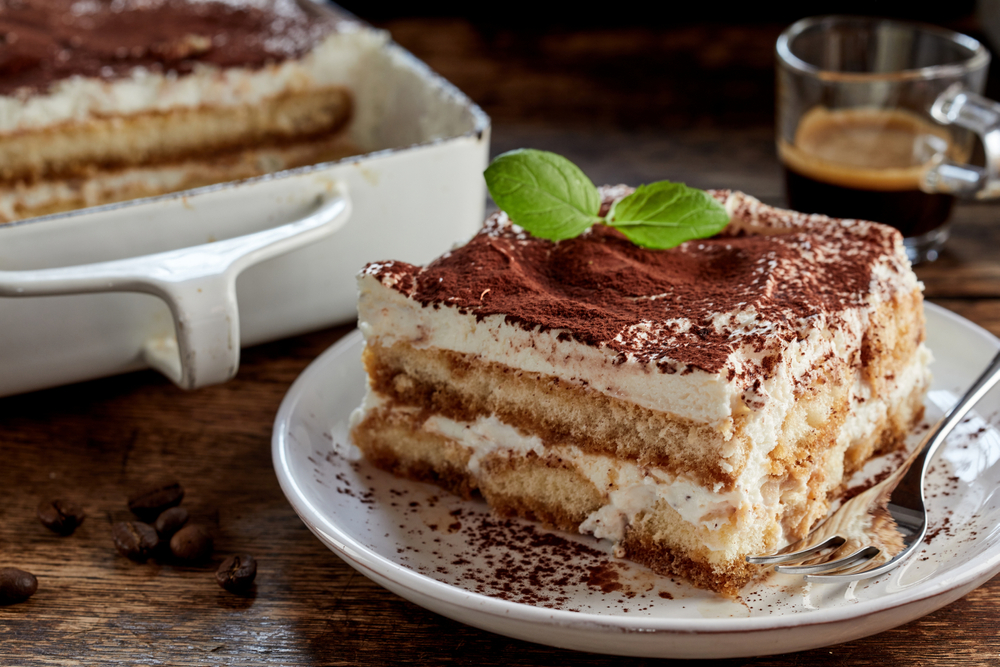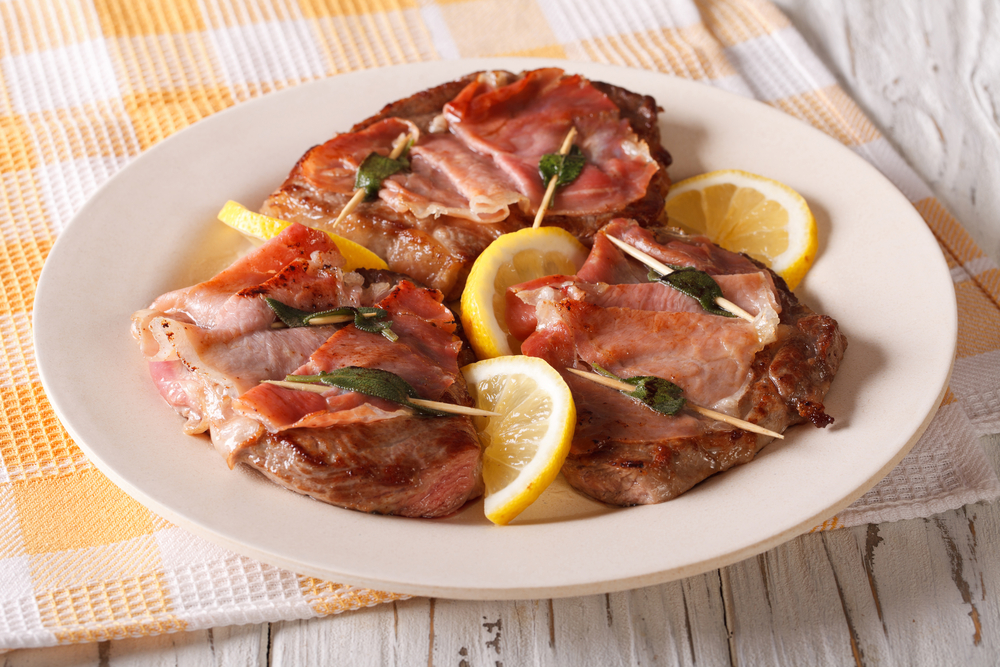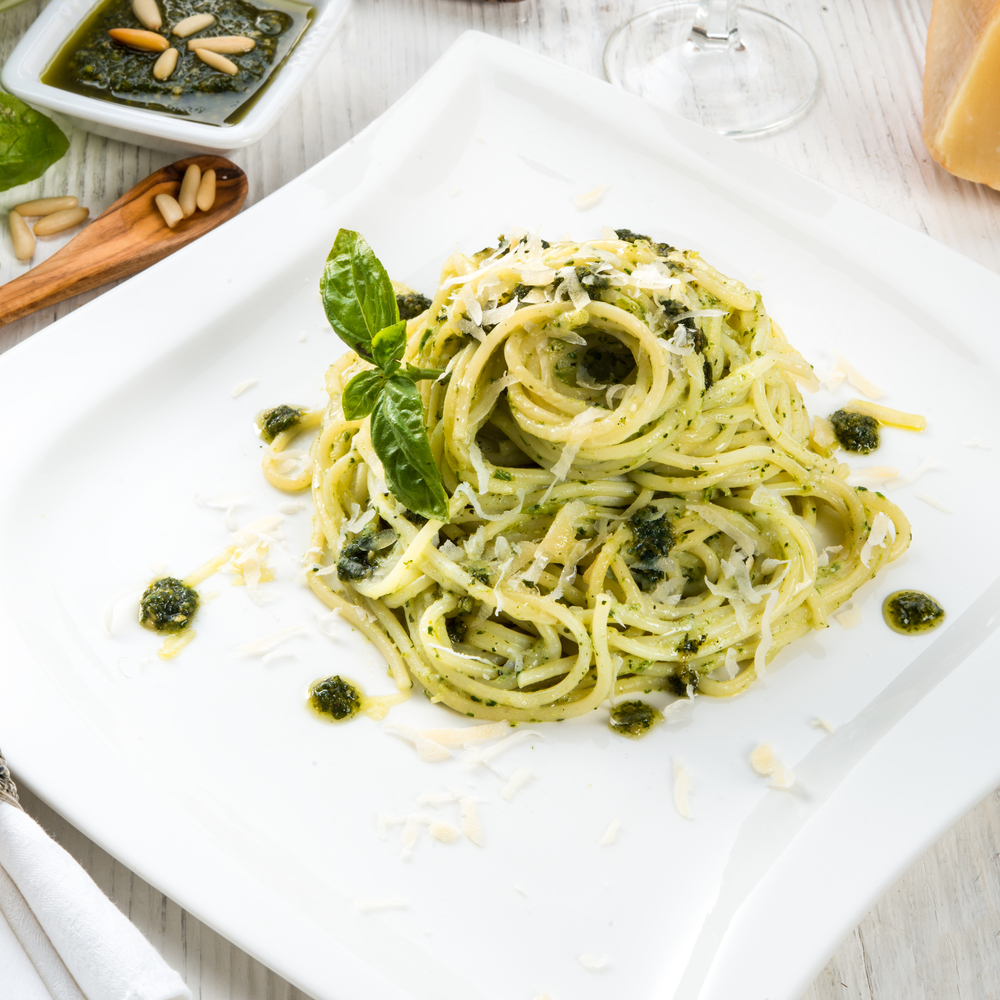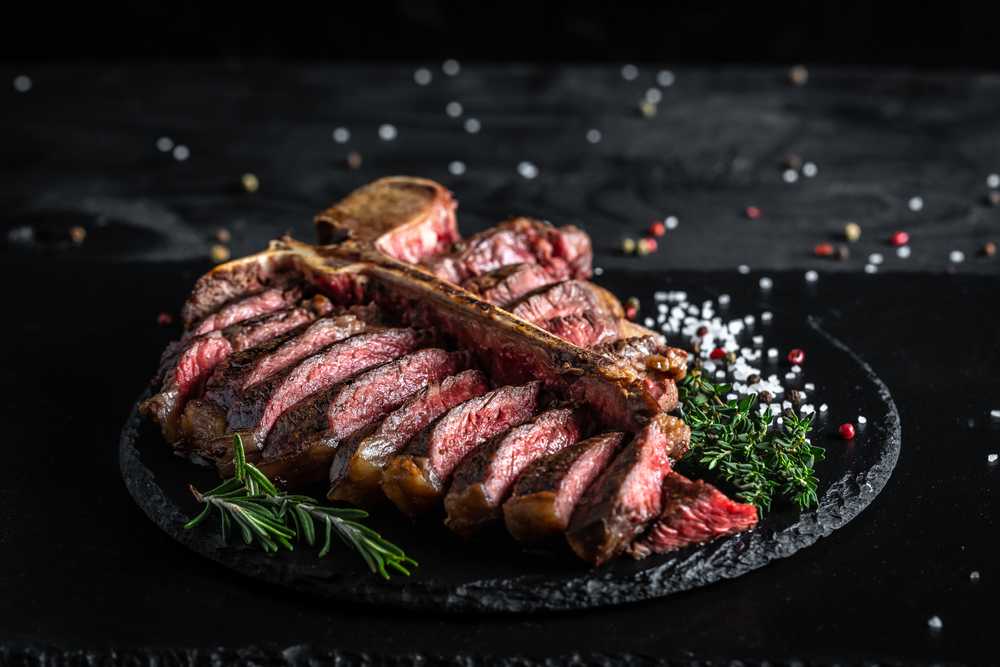Italian food holds a special place in kitchens around the world. From creamy pasta dishes to perfect pizzas, these recipes have stood the test of time for good reason. Learning to make authentic Italian dishes connects us to centuries of cooking tradition and brings the warm, comforting flavors of Italy right to our own tables. Ready to try your hand at some Italian classics?
1. Pasta Carbonara: Creamy Perfection Without Cream
Romans take serious pride in this simple yet sophisticated pasta dish. The magic happens when hot pasta meets raw eggs and cheese, creating a silky sauce without a drop of actual cream.
Traditional carbonara contains just five ingredients: pasta, eggs, pecorino cheese, guanciale (cured pork jowl), and black pepper. The technique matters most – tossing everything quickly while the pasta is hot but not so hot it scrambles the eggs.
Making authentic carbonara teaches valuable cooking timing and temperature control. Master this dish and you’ll understand why Italians get so upset when restaurants add cream or garlic to their beloved classic!
2. Lasagna: The Ultimate Layered Comfort Food
Behind every great lasagna lies hours of patient cooking and layers of flavor. Northern Italian versions feature béchamel sauce while southern styles embrace ricotta and mozzarella.
The foundation begins with a slow-simmered ragù that develops deep flavors over several hours. Between the pasta sheets, you’ll alternate between meat sauce, cheese mixture, and sometimes béchamel. Each layer gets careful attention before the dish spends time in the oven melding everything together.
Family recipes for lasagna often become treasured heirlooms passed through generations. Making one from scratch might take an afternoon, but the results are worth every minute spent in the kitchen.
3. Risotto: The Art of Patience and Stirring
Risotto showcases Italy’s genius for transforming humble ingredients into something magical. The short-grain rice slowly releases its starch as you stir, creating that signature creamy texture without adding cream.
Making proper risotto means committing to about 20 minutes of near-constant stirring as you gradually add warm broth. The classic Milanese version with saffron offers golden color and subtle flavor, while mushroom risotto brings earthy richness to the table.
Many home cooks feel intimidated by risotto, but the process is actually straightforward. The key is simply paying attention to the rice and having patience as it transforms from hard grains to a velvety dish.
4. Pizza Margherita: Simplicity at Its Finest
The story goes that Pizza Margherita was created in 1889 to honor Queen Margherita of Italy, featuring the colors of the Italian flag: red tomatoes, white mozzarella, and green basil. This pizza proves that perfection comes from quality ingredients, not quantity.
The real challenge lies in the dough – achieving that perfect balance of crisp exterior and chewy interior requires practice. San Marzano tomatoes provide the sweet-acidic base, while fresh buffalo mozzarella melts into creamy pools across the surface.
Home ovens can’t reach the 900°F of traditional wood-fired ovens, but a pizza stone or steel preheated for an hour helps create an authentic crust.
5. Osso Buco: Melt-in-Your-Mouth Veal Shanks
Originating from Milan, osso buco transforms tough veal shanks into fork-tender meat through slow braising. The name literally means “bone with a hole,” referring to the marrow-filled bone center that provides incredible richness.
The meat slowly cooks in white wine, broth, and aromatics until it nearly falls off the bone. Traditional accompaniment gremolata – a mixture of lemon zest, garlic, and parsley – brightens the rich dish with fresh flavor.
Making osso buco teaches the importance of patience in cooking. This isn’t fast food; it’s a celebration of transformation through time and technique, typically served over creamy risotto or polenta to soak up the flavorful sauce.
6. Tiramisu: The Classic Italian Pick-Me-Up
The name “tiramisu” translates to “pick me up” – fitting for this coffee-infused dessert that lifts spirits with every spoonful. Created in the Veneto region in the 1960s, it’s relatively new compared to other Italian classics.
Ladyfingers soaked in espresso and liqueur form the foundation, while the mascarpone cream provides luxurious richness. The balance is crucial – too much coffee makes soggy cookies, too little leaves them dry.
Making tiramisu requires no baking, just assembly and patience while it sets in the refrigerator. The contrast between the soft, coffee-soaked cookies and the light, creamy layers creates a dessert that feels both indulgent and somehow refreshing.
7. Saltimbocca alla Romana: The Dish That Jumps in Your Mouth
“Saltimbocca” means “jumps in the mouth” – an apt name for this flavor-packed Roman specialty. Thin slices of veal topped with prosciutto and sage leaves create a perfect trio of complementary flavors.
The technique seems simple but requires attention: the meat gets quickly sautéed then finished with white wine to create a light, flavorful sauce. Each bite delivers the perfect balance of tender veal, salty prosciutto, and aromatic sage.
This dish teaches the value of restraint in Italian cooking. With just a handful of quality ingredients and minimal cooking time, saltimbocca demonstrates how straightforward preparation often yields the most impressive results.
8. Pesto alla Genovese: Basil’s Greatest Gift
From the port city of Genoa comes one of Italy’s most famous sauces. Bright green and intensely aromatic, traditional pesto combines basil, pine nuts, garlic, Parmigiano-Reggiano, Pecorino, and olive oil into a versatile condiment.
Making authentic pesto by hand with a mortar and pestle (as the name suggests – “pestare” means “to pound”) produces superior texture and flavor. The gentle crushing releases oils without generating the heat that can darken basil.
Beyond pasta, try pesto spread on crusty bread, dolloped onto minestrone soup, or tossed with roasted vegetables. The sauce captures summer’s essence in a jar, bringing Mediterranean sunshine to your table year-round.
9. Bistecca alla Fiorentina: The King of Steaks
Florence’s famous T-bone steak isn’t just dinner—it’s a cultural institution. Cut from Chianina cattle and measuring at least 3 fingers thick, this massive steak typically weighs 2-3 pounds and serves multiple people.
Cooking follows strict traditions: grilling over wood or charcoal to rare or medium-rare only. Seasonings remain minimal—just salt before cooking and perhaps olive oil and pepper after. The meat speaks for itself without fancy sauces.
Making bistecca at home requires finding a proper thick-cut T-bone and having the confidence to cook such a substantial piece of meat. The reward is experiencing one of Italy’s most primal and satisfying culinary traditions.
10. Cannoli: Sicily’s Sweet Masterpiece
These crispy tubes filled with sweet ricotta cream originated in Sicily during the Arab rule. The contrast between the crunchy shell and creamy filling makes cannoli irresistible to dessert lovers worldwide.
Making cannoli shells requires wrapping dough around metal tubes before frying to golden perfection. The filling combines strained ricotta with sugar, sometimes chocolate chips, candied fruit, or pistachios. True cannoli are filled just before serving to prevent the shells from softening.
The phrase “leave the gun, take the cannoli” from The Godfather hints at how seriously Italians take these treats. One bite of homemade cannoli explains why they’ve remained popular for centuries.
